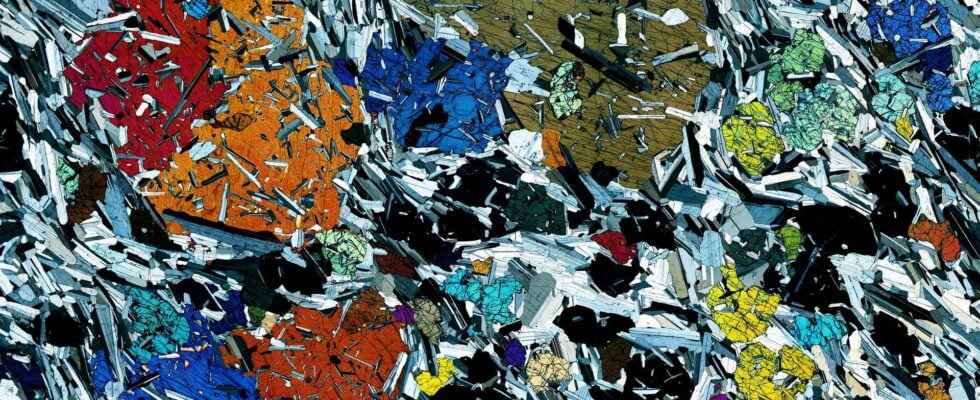The magmatic rocks that make up the majority of the Earth’s crust come from the crystallization of liquids magmatic, at the surface or at depth. Surface crystallization leads to the formation of volcanic rocks (extrusive) like basalts and deep crystallization to the formation of plutonic (intrusive) rocks, such as granites or gabbros. Magmatic liquids come from the partial fusion rocks that make up the earth’s crust or mantle. The chemical composition of magmatic rocks is thus linked to the composition of the original magmatic liquid, but not only. The crystallization processes in the magmatic reservoir also play an important role in the composition of these rocks.
Crystallization of different minerals depending on the temperature
Indeed, crystallization within a magmatic reservoir is most often fractionated, that is to say it is a non-continuous process, associated with the extraction of liquids. The minerals do not all crystallize at the same time. Each species mineral has a different crystallization temperature. As the temperature decreases, minerals gradually form on the edges of the Magma chamber. The first minerals to crystallize are high temperature minerals: olivine, pyroxenes then amphiboles. They thus leave the residual magmatic liquid, gradually modifying its chemical composition. This gives layers of minerals of different compositions.
During this crystallization, certain interactions can also occur between the magmatic liquid and the host rock, such as mixtures and contaminations, participating in the modification of the composition of the magma. Bedding mineral observable at the end of crystallization thus reflects the evolution of the local concentration of minerals within the magmatic chamber.
Magmatic differentiation
This differentiation from of a magmatic liquid of a given composition makes it possible to produce the four main types of igneous rocks: ultramafic rocks (e.g .: peridotites), mafic (eg: gabbros), intermediates (eg: diorites) and felsic (eg: granites).
The composition of all the layers reflects the original composition of the magmatic liquid, but the magmatic rocks thus formed show different mineralogical assemblages, the result of this process of fractional crystallization. During fractional crystallization, residual magmatic liquid can reach the surface, giving rise to extrusive rocks. These rocks will also have a variable composition depending on the stage of crystallization in the magma chamber. This is how we find basalts, from andesites or some rhyolites.
A magmatic rock therefore always contains in its geochemical signature three strongly intertwined information: the nature of the source, the conditions of partial melting and the crystallization processes.
You will also be interested
[EN VIDÉO] How does magma form before a volcanic eruption? The magma is at the origin of the formation of volcanoes. This molten rock, which bubbles in the crater, comes from a partial melting of the Earth’s mantle. Futura met Jacques-Marie Bardintzeff, doctor in volcanology, who tells the story of the origin of magma.
Interested in what you just read?
.
fs12
